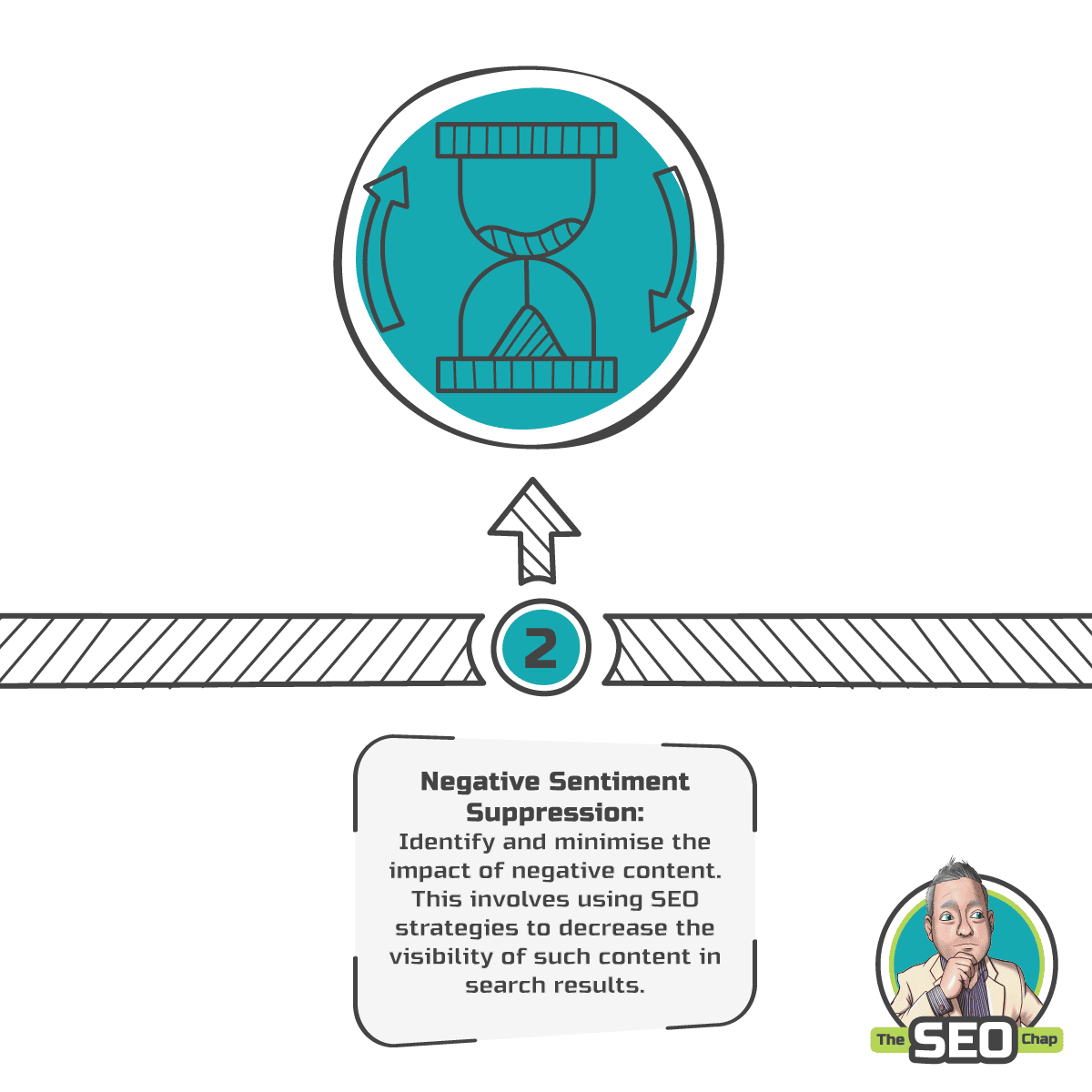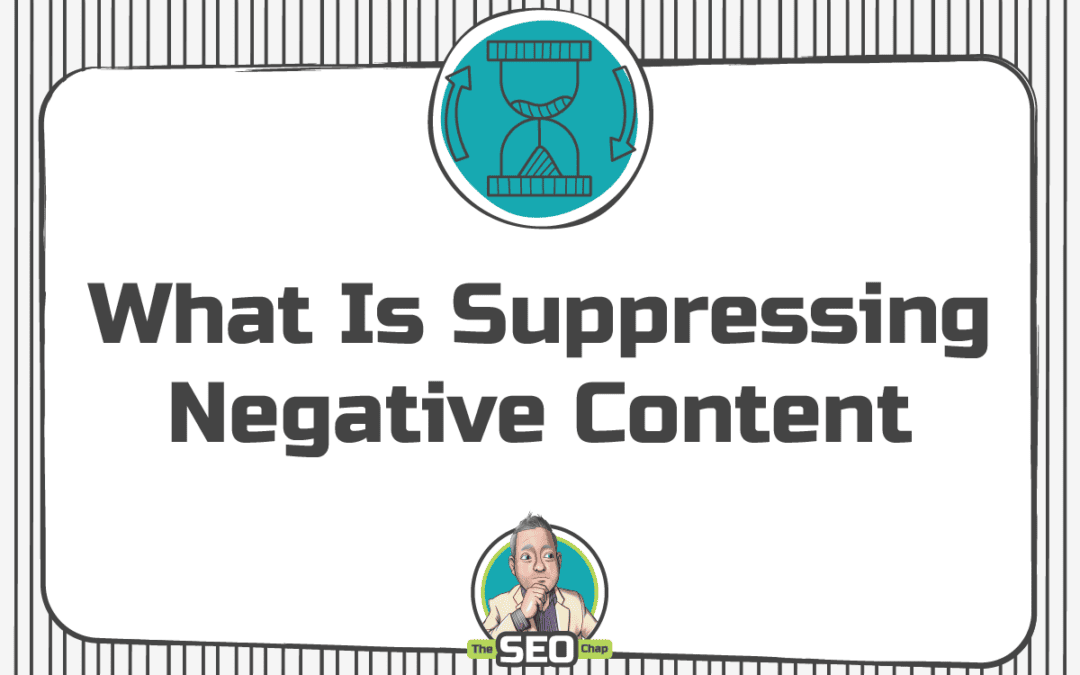If you want to know how to suppress negative content online, then read more. It’s becoming more and more important for individuals and businesses to protect their online reputation, and that means knowing how to control and suppress negative content.
I wanted to look at what suppressing negative content is, and how to do it effectively. We’ll cover topics such as reputation management, strategies for removal, and online tools. By the end, you’ll have a better understanding of how to tackle any negative content that appears online.
What is Suppressing Negative Content?
Keeping people from sharing their honest opinions can be like trying to hold back the tide. Suppressing negative content involves preventing people from expressing their honest opinions or reactions to a situation, product, or individual. This could be done by censorship, or by blocking or removing comments and posts from social media or other public platforms.
Suppressing negative content can have a variety of purposes. It can be used as a way to control the narrative around a product or individual, as well as a way to maintain order and civility on a public platform. It can also be used to reduce the spread of misinformation or to protect people from being exposed to potentially harmful or inflammatory content.
It is important to consider the implications of suppressing negative content when considering how best to use it. On the one hand, it can be a useful tool for controlling the narrative and maintaining order on public platforms. On the other hand, it can also be used in a way that limits freedom of expression and stifles honest opinions. This can lead to a lack of open discussion and debate, which can stifle creativity and prevent meaningful progress.
The decision to suppress negative content must be made with care and consideration for the effects it will have. It is important to weigh the potential benefits against the potential risks, and to ensure that freedom of expression is not unduly limited. Suppressing negative content can be a valuable tool in some cases, but it must be used responsibly and with consideration for its potential implications.
Reputation Management
Managing your reputation online means taking control of what people see when they search for you – and that starts with avoiding anything that could be considered unappealing. This means suppressing any negative content that could be associated with you from appearing on the search engine results.
Reputation management is the practice of monitoring your online presence and addressing any negative content that can be found. This involves monitoring the content that shows up when someone searches your name or brand, and taking action to ensure the most positive content is seen first.
Reputation management can be done in a few different ways. You can actively work to create more positive content that will appear on the search engine results, including blogging, creating social media accounts, or writing articles. You can also work to remove or suppress negative content that appears. This could include reaching out to the person who posted the content and asking them to take it down, or using a service that actively searches for and removes negative content.
No matter which approach you take, reputation management is an important part of protecting your online presence. It’s essential to stay on top of your brand’s reputation and make sure that any potential negative content is addressed quickly and effectively. Taking the time to monitor and address any negative content can have a significant impact on your business and personal reputation.
Identifying Negative Content
Identifying potential content that could negatively affect your online presence is essential for protecting your reputation. Knowing what to look for when browsing online can make it easier to detect and remove anything that could damage your public image.
For example, negative comments on your social media pages, negative reviews on your website, or articles written about your company in a derogatory manner. Other potential sources of negative content include online competitors, disgruntled employees, and even hackers.
To identify negative content, it’s important to stay up-to-date on the latest news and trends related to your business. It’s also important to monitor your online presence on a regular basis, making sure to review comments, reviews, and articles. Additionally, you can also set up alerts to inform you of any new content that may be generated.
By staying proactive and using the latest technologies to monitor and identify potential negative content, you can ensure that your reputation is protected and that you’re able to address any issues quickly and effectively. Taking these steps will give you peace of mind knowing that your online presence is being safeguarded.
Developing a Strategy for Removal
Once negative content’s identified, it’s time to develop a strategy for removal.
The most important factor to consider is the nature of the content.
-
- Is it a one-time post, or is it part of a larger issue?
- If it’s part of a larger issue, then the first thing to do is to analyze the source.
- Are they known for posting negative content?
- If not, then it’s worth considering the possibility of engaging with the poster and attempting to resolve the issue.
- If the content is from an established source, then the best course of action is to remove the content and block the user from posting it again.
It’s also important to remember that this isn’t a one-size-fits-all solution. Depending on the nature of the content, some moderation may be necessary to ensure the content doesn’t appear again.
In some cases, it may be necessary to take legal action. If the content is libelous or defamatory, then it’s important to seek out a lawyer to determine the best course of action. Taking swift action can help to protect the reputation of the brand and reduce the potential for further damage.

Working with Online Platforms
Working with online platforms is an essential part of keeping your brand’s reputation intact, so it’s important to be aware of their policies to ensure you’re taking the right steps. It’s important to remember that each platform has its own policy for dealing with negative content, so it’s important to do your research and make sure you’re following the proper protocol.
Here are some key points to keep in mind when dealing with negative content on online platforms:
Respect the platform’s rules and policies
Be proactive in monitoring and responding to negative content
Develop relationships with the platform’s representatives to ensure swift resolution
Find ways to address the underlying issue that caused the negative content
Working with online platforms is not only about removing negative content, but also about preventing it in the first place. By knowing the platform’s policies and understanding the underlying issues that caused the negative content, you can take proactive steps to protect your brand and its reputation.
Taking the time to understand the platform and its policies can go a long way in keeping your brand’s reputation intact.
Utilising Automated Tools
Take advantage of automated tools to make keeping track of your brand’s online presence a breeze! Automated tools are becoming increasingly popular with companies of all sizes, as they can help you quickly and easily monitor your brand’s online presence.
Automated tools allow you to set up alerts, receive notifications, and even use AI-driven technology to scan social media for negative content. This allows you to address any negative comments or reviews quickly and effectively, while also allowing you to keep an eye out for any potential problems that may arise.
Another benefit of automated tools is that they can help you control the spread of any negative content. By using automated tools to monitor and track any negative content, you can identify the source quickly and take steps to limit its reach.
Additionally, automated tools can help you identify any opportunities to engage with customers in a positive way, allowing you to turn a negative situation into a positive one.
Overall, automated tools can be a great way to manage and monitor your brand’s online presence. With the right tools, you can quickly and easily respond to any negative content, while also taking the necessary steps to limit its reach. With automated tools, you can ensure that your brand’s online presence is always positive and engaging.
Hiring a Professional Service
Gain peace of mind by hiring a professional service to manage your brand’s online presence – they’ll take care of it so you don’t have to!
A professional service can help you develop a plan to effectively suppress negative content and maintain your brand’s positive reputation. They can monitor comments, posts, and reviews, responding to any negative feedback quickly and effectively. Furthermore, they can also create content that supports your brand, helping to create a positive impression of your brand across the web.
An experienced professional service will have the resources to stay up to date on the latest trends and information related to digital marketing. They will be able to keep track of potential threats and address any issues that could cause harm to your brand.
With the help of a professional service, you can ensure that your brand’s online presence is managed in a secure and reliable manner. Hiring a professional service can help you protect your brand’s reputation from any potential damage caused by negative content.
With their help, you can rest assured that your brand’s online presence will be managed in a safe and effective manner.
Using Legal Recourse
When it comes to protecting your brand’s reputation, legal recourse can be a powerful tool to put a stop to damaging content. If you are the victim of libel or slander, you can take action against the individual or organization that has posted the negative content. This could be done through a cease and desist letter or a lawsuit, depending on the severity of the content. If you choose to take legal action, it’s important to be aware of the potential consequences, such as the cost and time of litigation and the potential for further public attention.
Another important consideration when it comes to using legal recourse is to make sure that you are not infringing upon the right to free speech. Freedom of speech is a fundamental human right that must be respected, even when that speech is negative. This means that it’s important to understand the difference between libel or slander and criticism or opinion. Legal action should only be taken if you have a strong case of libel or slander against the author of the negative content.
It’s also important to consider the potential effects of the legal process. Even if you’re successful in protecting your brand’s reputation, the negative content may remain in the public consciousness, and the legal process itself may draw more attention to the negative content. Therefore, when it comes to using legal recourse, it’s important to weigh all of your options carefully.
Monitoring the Results
Staying on top of the results of your reputation management efforts is essential for ensuring long-term success. Doing so means taking periodic assessments of the progress made, as well as any new information that needs suppressing negative content, that could have been created since the last evaluation.
This should be done periodically to identify any new sources of negative content and focus efforts on removing it quickly. Having a comprehensive plan in place for monitoring the results of your reputation management is key to staying ahead of any potentially damaging content.
This plan should involve regular review of search engine results, as well as monitoring social media platforms, to ensure that all negative content is identified and addressed before it has a chance to spread. Additionally, having a system for measuring the effectiveness of the efforts and ensuring that new strategies are implemented as necessary can further improve the overall success of the reputation management.
The goal of any reputation management effort is to protect and maintain a positive online presence. By regularly monitoring the results of the efforts, it’s possible to ensure that any negative content is quickly identified and removed before it has a chance to cause real damage. With the right approach and processes in place, it’s possible to maintain a positive online presence and protect against potential damage caused by negative content.
Conclusion
You’ve done your best to suppress negative content, but it’s not always easy. Reputation management and identifying negative content are the first steps. Developing a strategy to remove it is key.
You can work with online platforms, utilise automated tools, hire a professional service, and even use legal recourse if needed. Ultimately, it’s important to keep monitoring the results to ensure the negative content is no longer visible.
Taking the necessary steps to protect your reputation can save you a lot of time and hassle in the long run.


